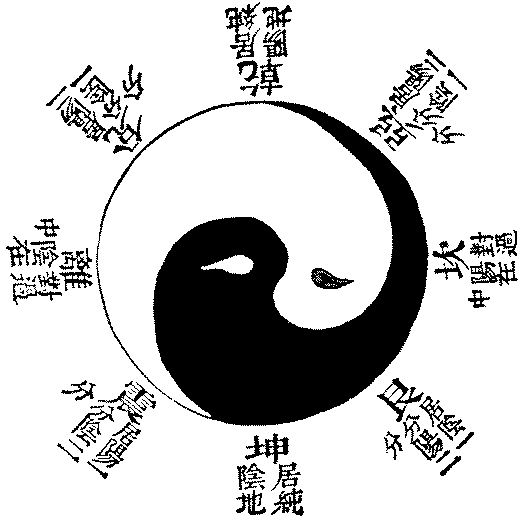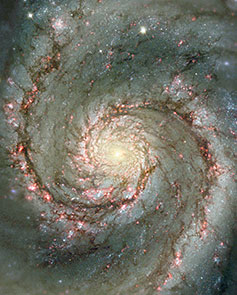

One World
Nations Online
All Countries in the World
 |
 One World Nations Online All Countries in the World |
| Home |
||
|
||
Yin - Yang Yin characteristics: passive, negative, darkness, earth, north slope, cloudy, water, softness, female, moisture, night-time, downward seeking, slowness, consuming, cold, odd numbers, and docile aspects of things. The Yin - Yang Theory is an important principle in Taoism.  Image source: Stanford University - Department of Religious Studies Yin (black) and Yang (white). The two inner dots represent Yin within Yang and Yang within Yin. Shown around the circumference are the eight trigrams (bagua), which in this case represent different stages in the cycles of increase and decrease of Yin and Yang (clockwise from the lower left corner: zhen, li, dui, qian, sun, kan, gen, and kun). Source: Hu Wei (1633-1714). Yin and Yang in Chinese Mythology The Pangu* legend In the beginning there was nothing in the universe except a formless chaos. The chaos began to coalesce into a cosmic egg for eighteen thousand years. Within it, the perfectly opposed principles of yin and yang became balanced and Pangu, emerged from the egg. Pangu set about the task of creating the world: he separated Yin from Yang with a swing of his giant axe, creating the Earth (dark Yin) and the Sky (bright Yang). To keep them separated, Pangu stood between them and pushed up the Sky. This took him eighteen thousand years as well, each day the sky grew ten feet higher, the Earth ten feet wider, and Pangu ten feet taller. In this task Pangu was aided by the four most prominent beasts, namely the Turtle, the Qilin, the Phoenix, and the Dragon. After the eighteen thousand years had elapsed, Pangu was laid to rest. His breath became the wind; his voice the thunder; his left eye the sun and his right eye the moon; his body became the mountains and extremes of the world; his blood formed rivers; his muscles the fertile lands; his facial hair the stars and milky way; his fur the bushes and forests; his bones the valuable minerals; his bone marrow sacred diamonds; his sweat fell as rain; and the fleas on his fur carried by the wind became human beings all over the world. The distance from Earth and Sky at the end of the 18,000 years would have been 12,443 miles, or over 20,025 km. * Pangu (Traditional: 盤古; Simplified: 盘古; pinyin: Pángǔ; Wade-Giles: P'an ku) was the first living being and the creator of all in Chinese mythology. The first writer to record the myth of Pangu was Xú Zhěng (徐整) 220 - 265 AD, a Three Kingdoms period Taoist author of the "Three Five Historic Records" (Chinese: 三五歷紀; pinyin: Sānwǔ Lìjì, literally: "Three Five Calendar"). The "3-5" refers to the "3 Sovereigns and 5 Emperors" (三皇五帝). See also: |
 Spiral galaxy M51a in the constellation Canes Venatici. |
|
Country information: China | Bhutan | Hong Kong | India | Japan | Korea | Laos | Malaysia | Mongolia | Nepal | Singapore | Taiwan | Tibet | Thailand | Vietnam More Countries in Asia Map of Southeast Asia Back to the index of Chinese Customs and Traditions Glossary |
Bookmark/share this page
|
|
One World - Nations Online .:. let's care for this planet To the mind that is still, the whole universe surrenders. 老子 |
| Site Map | Information Sources | Advertise with OWNO | Disclaimer: Privacy Policy, etc. | Contact: [email protected] | Copyright © 1998-2016 :: nationsonline.org |